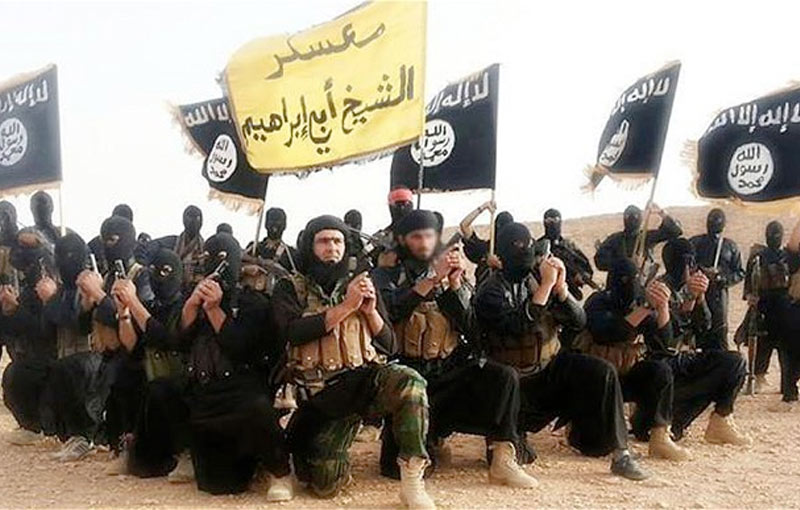 Members of the Islam State of Iraq and Shaam (Isis) with senior commander Abu Waheeb
Members of the Islam State of Iraq and Shaam (Isis) with senior commander Abu Waheeb
The rapid advance across Iraq by militant fighters from the Islamic State, widely known as Isis, has thrown the country into chaos
The rise of IS and other violently sectarian organisations in the Middle East is one of the bloody consequences of many interrelated factors.
First, the US arming and training Bin Laden and Taliban forces in Afghanistan/Pakistan in the 1980’s.
Second, the 2001 US-led invasion and occupation of Afghanistan.
Third, the 2003 invasion and occupation of Iraq, which led to the destruction of the country’s state and social institutions and the emergence of terrorist organisations. The US operated death squads and formed six secret militias to fight the resistance in Iraq.
Fourth, the NATO bombing of Libya and support for former Guantanamo detainees and militias there.
Fifth, the NATO members’ and Gulf rulers’ arming and funding of Syrian armed sectarian organisations through NATO’s Turkey. Qatar alone spent $3 billion within two years (2011-13).
Sixth, the US, Saudi and Qatari efforts to isolate and encircle Iran through a sectarian propaganda war since the 1979 Iranian revolution.
Seventh, a largesse of countless billions of petrodollars expended by the Saudi and Qatari ruling Wahhabi families, over many decades, to spread the violently sectarian Wahhabi cult throughout the Muslim world and Europe.
Eighth, the emergence of an alliance, at least de facto and temporary, in Iraq between ISIS, Barzani’s powerful Kurdish militias and former Saddamist officers and the Ba’ath party, led by Saddam’s former deputy, Izzet al-Douri.
The vast majority on Sunni Muslims reject the Wahhabi cult, which goes against the traditions of nearly all Muslim countries. In Iraq in the 1920’s Shia and Sunni leading clergy united to expel Wahhabis coming into Iraq from the Arabian peninsula.
A similar alliance will emerge.
Sami Ramadani is an Iraqi-born sociology lecturer, writer on Iraq and Middle East current affairs and a member of Stop the War Coalition steering committee.

